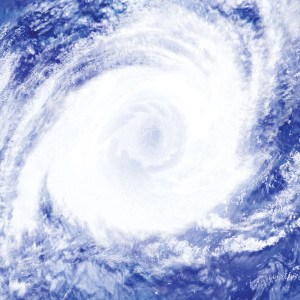Hurricane Irene cut power to more than a million people in Puerto Rico, downing trees and flooding streets, before heading out over warm ocean water Monday on a path that could take it to the U.S. mainland by the end of the week.
 There were no reports of deaths of major injuries in Puerto Rico, but Gov. Luis Fortuno declared a state of emergency and urged people to stay indoors to avoid downed power lines, flooded streets and other hazards.
There were no reports of deaths of major injuries in Puerto Rico, but Gov. Luis Fortuno declared a state of emergency and urged people to stay indoors to avoid downed power lines, flooded streets and other hazards.
“This isn’t the time to go out to find out what happened … This is the time stay in your homes,” Fortuno said at a news conference.
The first hurricane of the Atlantic storm season posed an immediate threat to the northeastern coast of the Dominican Republic, though the center of the hurricane was expected to miss neighboring Haiti, which shares the island of Hispaniola. Nearly 600,000 Haitians are still homeless due to the January 2010 earthquake and that country could still see heavy rain and tropical-storm-force winds, said Dennis Feltgen, a spokesman for the U.S. National Hurricane Center in Miami.
“We don’t expect to this to get ripped up over the mountains of Hispaniola,” Feltgen said. “We expect it to remain a hurricane.”
The storm was expected to head toward the Bahamas and authorities warned people in Florida, Georgia and South Carolina to follow it closely since its path was uncertain. The forecast track would carry it to just off the Florida coast by Friday morning.
Authorities in Palm Beach County directed staffers to stop routine operations Monday and switch to storm preparations, including checks on generators and communications equipment.
“Hurricane preparations are pretty much the order of the day,” said Mike Geier, radiological emergency preparedness planner. “We go through a pretty extensive checklist. It’s probably three pages long.”
Hurricane Irene centered about 90 miles (140 kilometers) west-northwest of San Juan Monday morning and it was moving toward the west-northwest at 14 mph (22 kph). It had maximum sustained winds of about 80 mph (130 kph), the Hurricane Center reported.
In Puerto Rico, crews were out clearing streets and assessing the damage but the governor and other officials gave no indication when power would be restored. Schools, most government offices and many businesses remained closed. Flights were expected to resume at the international airport in San Juan by midmorning.
Dozens of people in San Juan sought emergency shelter ahead of Irene and authorities evacuated 150 tourists from the outlying islands of Culebra and Vieques as the storm approached.
In the Dominican Republic, officials assured residents they had food available for 1.5 million people if needed. Also, soldiers and emergency management crews evacuated dozens of residents from high-risk areas along the southern coast.
“We have taken all precautions,” presidential spokesman Rafael Nunez said.
Many stores in the capital of Santo Domingo closed Sunday even as people bought last-minute items like flashlights.
The Hurricane Center said the main impediment to the storm’s progress over the next couple of days will be interaction with land. If Irene passes over Hispaniola’s mountains or over parts of eastern Cuba, the storm could weaken more than currently expected.
“However, if the system ends up moving to the north of both of those land masses it could strengthen more than expected,” wrote forecaster Richard Pasch.
(Associated Press writers Ben Fox in San Juan and Kelli Kennedy in Miami contributed to this report.)
Was this article valuable?
Here are more articles you may enjoy.

 As Trump Considers Auto Tariffs Pause, Parts Exemptions Could Be Key for US Industry
As Trump Considers Auto Tariffs Pause, Parts Exemptions Could Be Key for US Industry  US Officials Mull Easing Tariffs Targeting the Auto Industry
US Officials Mull Easing Tariffs Targeting the Auto Industry  US Regulator Takes Initial Steps to Boost Self-Driving Cars
US Regulator Takes Initial Steps to Boost Self-Driving Cars  La Niña’s End Threatens to Unleash an Active Atlantic Hurricane Season
La Niña’s End Threatens to Unleash an Active Atlantic Hurricane Season 